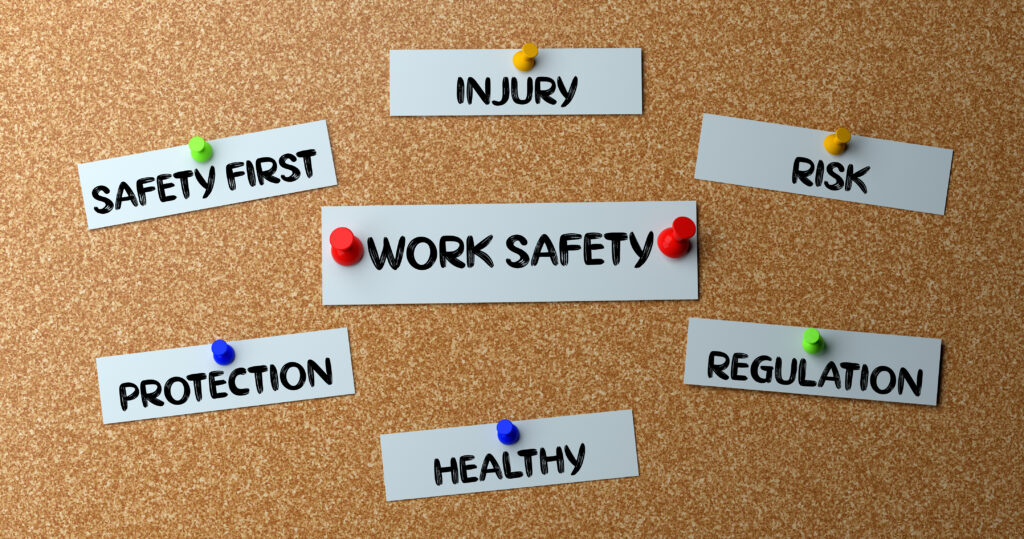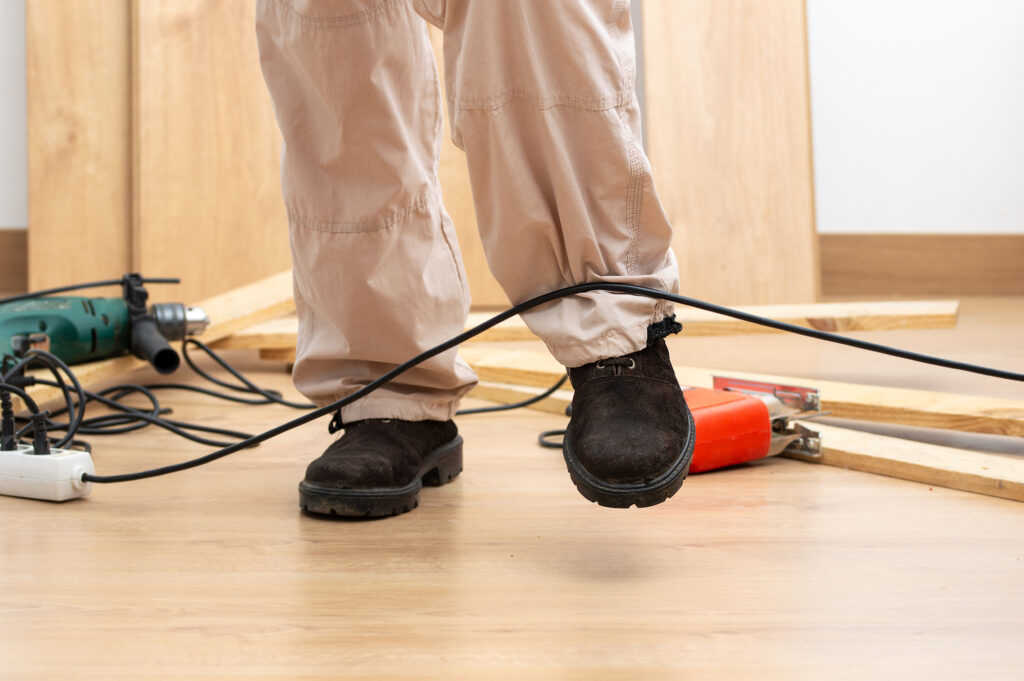While unexpected visits from the Ministry of Labour, Immigration, Training, and Skills Development (MLITSD) can be nerve-wracking, they’re vital for workplace safety. With preparation and awareness of what to anticipate, employers can feel more at ease during inspections.
What Inspectors Are Seeking: A Comprehensive Overview
During a workplace inspection, inspectors ensure that employers are taking reasonable precautions to maintain employee safety and comply with OHSA regulations. They may concentrate on initiatives like preventing occupational illnesses and identifying workplace hazards.
See the full compliance initiative schedule.
Ministry inspectors conduct two types of field visits: proactive and reactive inspections, both crucial aspects of their work.
Proactive inspections are surprise visits aimed at identifying potential hazards to enhance safety and prevent accidents. In the fiscal year 2021-2022, 47.5% (36,073) of field visits fell into this category, a consistent figure from the previous year. During these visits, inspectors issued 62,419 orders, making up 65% of all orders issued.
Reactive inspections, on the other hand, are conducted in response to specific incidents like fatalities, serious injuries, complaints, or health issues in the workplace. In the same fiscal year, there were 39,949 reactive field visits, resulting in inspectors issuing 33,428 orders.

When conducting an assessment to ensure workplace compliance with OHSA regulations, an inspector may seek out:
- Faulty equipment or machinery, including worn-out fall protection lifelines, unsecured bolts on forklift trucks, or unstable ladder and scaffolding rungs.
- Risks of falling, such as insufficient or absent guardrails, incorrect harness usage, or slippery surfaces.
- Documentation of Safety Data Sheets (SDS) for all hazardous substances present in the workplace.
- Verification of continuous supervision by a supervisor during work activities.
- Displayed policies concerning health and safety in the workplace.
- Displayed emergency protocols for immediate reference.
- Publicized records of Joint Health and Safety Committee (JHSC) inspections.
- Displayed policies addressing workplace violence and harassment.
- Displayed materials related to health, safety, and employment standards.
- A readily accessible copy of the Occupational Health and Safety Act (OHSA), colloquially known as the Green Book.
- Documentation of completed health and safety training sessions.

In July 2022, the Working for Workers Act, 2022, also known as Bill 88, was enacted, introducing fresh mandates for Ontario workplaces. These requirements encompass various aspects aimed at enhancing labor conditions and ensuring worker welfare.
See the full Working for Workers Act, 2022.
What should you do during an inspection?
The OHSA mandates full cooperation with inspectors during inspections, prohibiting any form of interference. Such interference encompasses providing false information or withholding required details.
Upon the inspector’s arrival, they may request to confer with a manager or a representative from your Joint Health and Safety Committee (JHSC).
To ensure a smooth inspection process, you should:
- Honesty is Key: Respond to the inspector’s questions truthfully and transparently.
- Document Compliance: Provide any documentation requested by the inspector and ensure a receipt is obtained for all documents surrendered.
- Clear Communication: Ensure that both managers and employees understand the importance of answering the inspector’s questions truthfully and to the best of their abilities.
- Designated Accompaniment: Assign a certified non-management member of the Joint Health and Safety Committee (JHSC) to accompany both the inspector and the employer during the inspection, ensuring proper representation and compliance.
Feel free to inquire with the inspector during or after the inspection, whether it be for clarification or advice on specific topics. Inspectors are typically eager to share their knowledge and can guide you to pertinent resources.
What are the consequences if the inspector identifies a problem?
If an inspector identifies a violation of the OHSA or its regulations, they have the authority to impose fines through ticketing and issue an order requiring the employer to correct the violation.
There are two distinct types of orders:
Compliance orders: Employers are provided with a specified timeframe to adhere to these orders. Examples include establishing particular health and safety procedures, updating specific training certifications, or displaying the current OHSA copy in the workplace.
Stop work orders: In cases where there is an imminent threat to employees’ health or safety, inspectors will instruct the employer to halt operations until the hazard is resolved.
The Ontario Court of Justice provides detailed fine amounts in the Set Fine Schedule for OHSA violations. Typically, on-site tickets range from $250 to $350 for workers, $450 to $550 for supervisors, and $550 to $650 for employers. However, as of July 2022, new penalty provisions have been implemented, raising the maximum fines for directors or officers of a corporation from $100,000 to $1,500,000, and to $500,000 for other individuals.

What should you do if an order is issued?
When an order is issued, the initial action is to adhere to the directive and inform the MTLSD within three days by filling out the Notice of Compliance form, which should have been supplied by the inspector upon issuing the order. This form must be:
- Signed by the employer
- Accompanied by a signed statement from a non-management member of the joint health and safety committee or a health and safety representative, stating their agreement or disagreement regarding the employer’s compliance with the order
- Sent to the inspector whose address will be specified on the form.
An additional copy of the inspector’s order or report should be prominently displayed in the workplace to ensure visibility for employees. Simultaneously, a duplicate must be provided to either the Joint Health and Safety Committee or the safety representative.
Regularly review and update your health and safety program
In Ontario, it is mandatory for every workplace to possess a documented health and safety program. This program delineates your strategy for establishing a secure work environment. It’s essential to note that these programs will differ based on the nature and requirements of each workplace.
Utilizing a checklist during monthly Joint Health and Safety Committee (JHSC) inspections is crucial to ensure comprehensive coverage and prevent oversights. Regular and meticulous JHSC inspections are paramount in maintaining workplace safety, facilitating the identification, and prompt resolution of any health and safety concerns. This proactive approach mitigates the risk of encountering issues during unexpected MLITSD inspections.
The most effective checklist is one tailored to the unique requirements of your organization. It should be customized to address specific items and areas within your workplace. Begin by using our template as a foundation to develop your inspection checklist.